Trout Hunting in Tongariro River and Tips for Fishing in New Zealand
New Zealand is where we come to realize our dreams … dreams of a place we’ve all thought only exists in movies; a place made up of little slices of heaven scattering harmoniously across the length of its estate; and a place where trout hunting means more than just ‘fishing’.
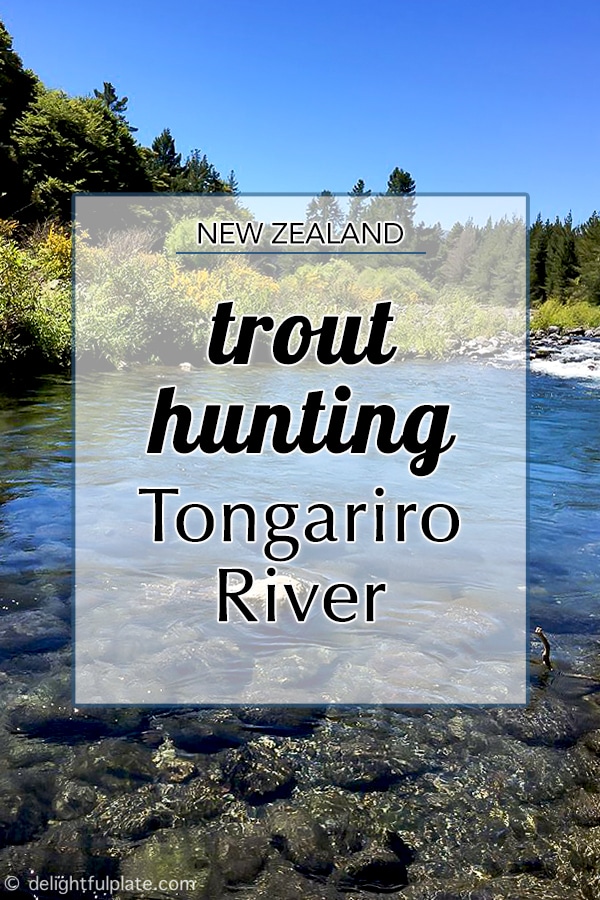
Trout Fishing in Tongariro River, New Zealand
Baz, Jase and I spent our first week on the North Island of New Zealand. Fishing was one of the main reasons we came to this gorgeous country. A local recommended that we try Tongariro River in Turangi, duped “the unofficial trout fishing headquarters of New Zealand”. We heeded the advice and scrapped the original plan of visiting Lake Taupo, which we all agreed was too big for us to cover any ground at all.
Tongariro River is particularly popular among the locals, though tourists do seek out the famous body of water for a number of activities, from adrenaline-filled rafting to adventurous hiking and mountain biking.
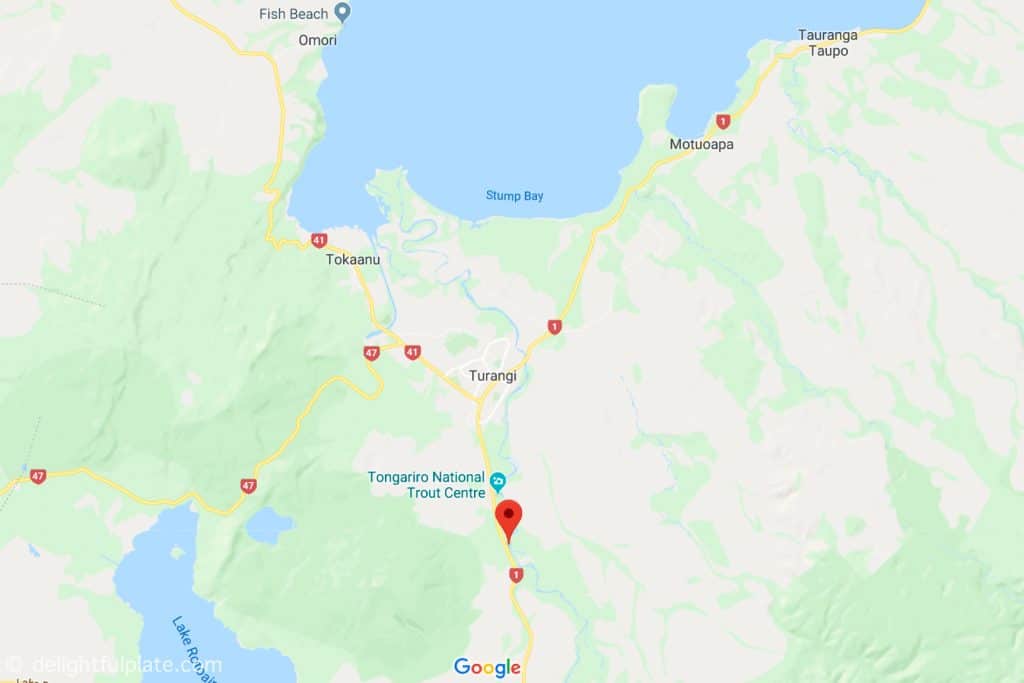
Tongariro River’s hidden gems are the feisty rainbow trouts. Especially challenging to catch, they offer sports fishermen an exciting mission to accomplish.
We decided to give it a go, confident in our newly acquired fly fishing skills. Amateur, but skillful nonetheless! The only drawback, at least for me, was that the river was restricted to fly-fishing, which means my spinning rod shouldn’t wander off anywhere near the rocky banks.
We headed to a local tackle store to hire a few pairs of waders and gumboots. The friendly store keeper was eager to offer us some guidance. His enthusiasm lifted our spirits, touching us with hope, hope for a fine day when we would finally get what we came for. And with that hope, we departed, equipped with great memories of a new friendship, nice gears we paid for at mates rates, and the many valuable pieces of advice that were often hard to come by.
Tips for fishing in New Zealand
This was our first time fishing for trout, or fishing in New Zealand for that matter. We quickly learned that New Zealand’s fishing scene had more rules and regulations than we thought possible.
Fishermen are required to purchase and carry a fishing license with them at any given time. If you’re a non-resident, it might be a bit pricey to acquire such a license, though you can choose between a yearly permit for $129 NZD, a weekly permit for $65 NZD or a 24-hour permit for $20 NZD. This should work out well for you hip pocket, if you know how often you’ll be fishing.
There’s also a need for you to get yourself up to date with the different fishing zones within the Taupō district, which come with very specific restrictions. It’s handy to always keep this fishing map on you at all times to help you navigate the labyrinth of rules. It was nothing short of overwhelming for us to familiarize ourselves with said rules in half a day, but in the end, we decided to just wing it. “We’re here now and nothing is going to stop us from getting our first trout”, or at least that was what we thought.
The humble beauty of Tongariro River
The serenity and picture-perfect display of Tongariro River was mind-blowing. It’s love at first sight and we all shared the same sentiment. Should we start trout fishing? Or should we just sit here and take it all in before having to leave behind this stunning piece of heaven on earth the day after?
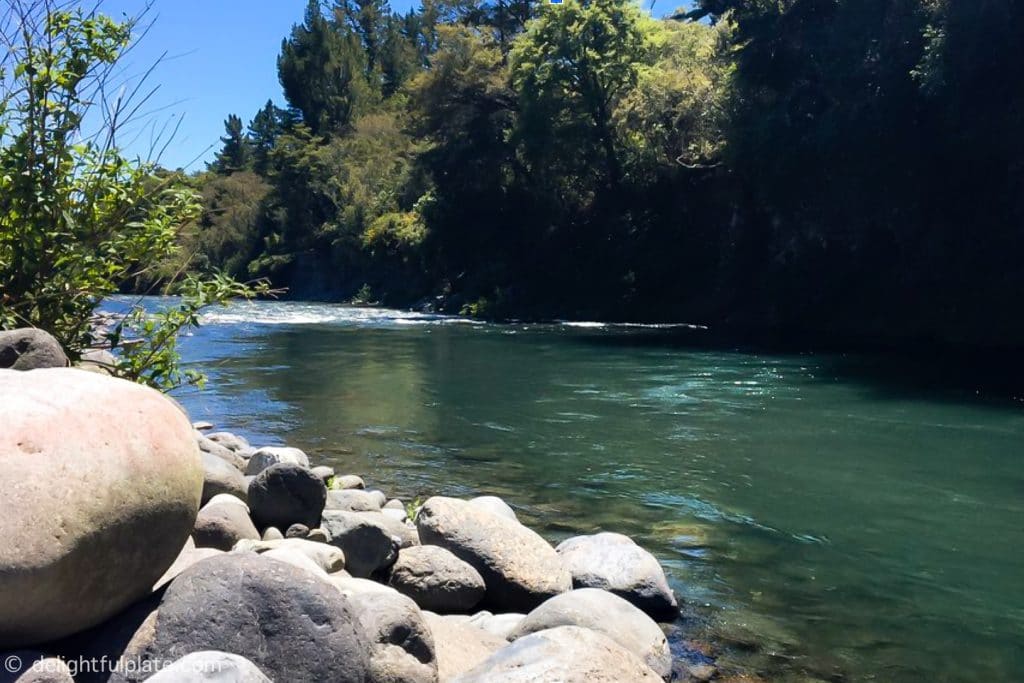
There were a couple of rapids here and there where the water rushed downstream over rocky terrains, creating a peaceful sound that was a constant backdrop of the fine summer day.
Rocks, in all sizes and shapes, scattered everywhere. Treading through this rough stretch of land wasn’t so pleasant. Baz said he dreaded each step he took over the rocky surface. His left foot had lost its feeling more than 36 years ago when he had surgery done on his spinal cord.
“I don’t complain,” he said nonetheless, “as I was lucky enough not to end up in a wheelchair like my doctor said I could have 6 months prior to then”. He was delighted to be among such a beautiful scene.
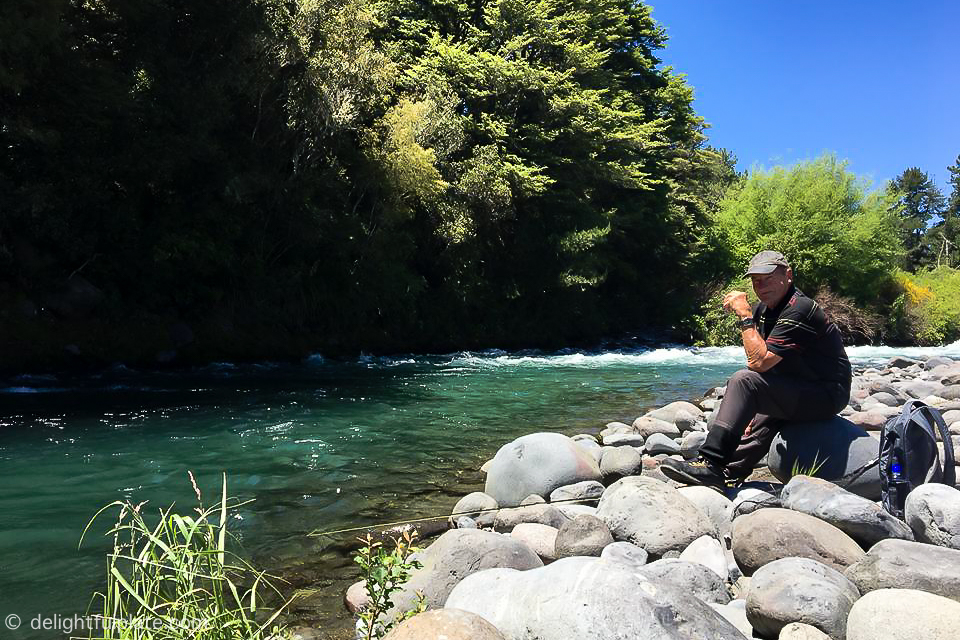
Putting in the hard yard
After half an hour of giving in to the surroundings, we started casting, hoping to get on some trout straight away. We could see them wandering about through the clearest of water. There were six or seven of them swimming upstream. I wasn’t sure if they were struggling, or whether that was solely a method of hunting; waiting for food to float by and snatching it. Quick and easy meal!
I was never that into fly fishing and didn’t spend much time doing research on trout fishing. Jase, on the other hand, read a great deal about this sport. He’s a master of spin fishing, but getting a trout by way of fly fishing has always been a challenge. Yet the idea of hooking up his first rainbow trout that way motivated him to constantly give it his best. There was meaning to be gained in conquering that quest.
He lifted a random rock that was partly submerged to see what sort of food there was in the stream. A few tiny grubs were seen crawling about, which crept me out and disinterested me straight away. He then picked out a fly that resembled these creatures and got down to business.
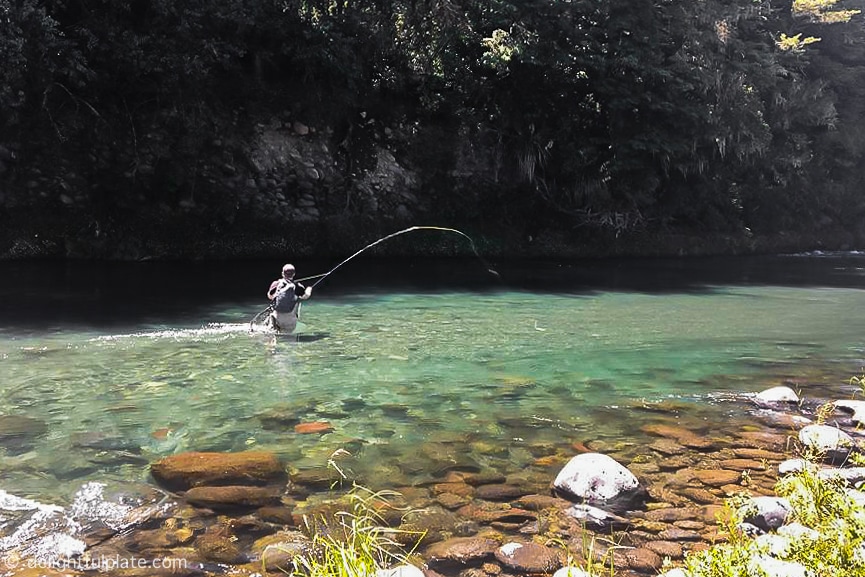
Boy what I wouldn’t trade for Jase’s patience! I was entirely worn out not long after having dragged myself through the cold water and layers of rocks underneath. Yet he continued on, with a pack and a net on his back, covering a good 500 meters, casting at the same time.
Now that I think back to that sunny day, I can’t recall seeing Jase sit down once for a break. If he wasn’t in the water eagerly casting, he would be going through his lure boxes for some other options that he thought would offer him more chances of getting his first trout.
It came as no surprise to us that Jase finally got his first trout. Sitting 200 meters away from where he was when he hooked up, I could hear an ecstatic yell, filled with pride and determination, “I’m on!”
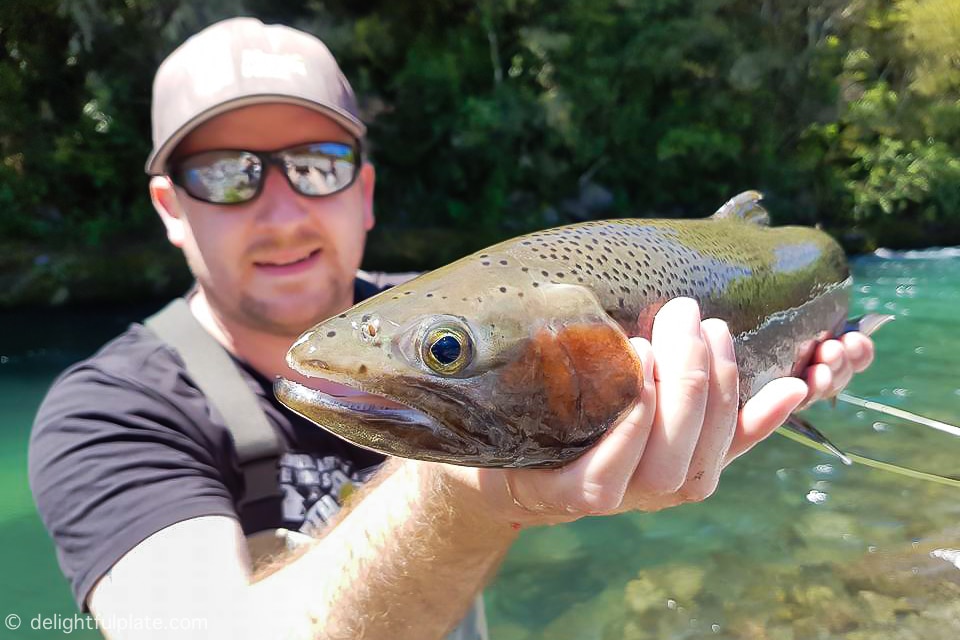
Bonus fly fishing tips
Fly fishing can look deceptively easy, though anyone who has attempted it would tell you differently. It’s a sport that can change you as a person. It shows you the vast difference between repeating a theory and putting it into practice. It requires a high level of patience and persistence to make the right and proper cast. And like any other things in life, practice makes perfect.
However, don’t let those challenges discourage you from giving fly fishing a try. Once you have got the hang of it, the fun will begin. To help you get a head start, below are some very simple tips on how to get your first trout by way of fly fishing.
1. Study trout’s feeding habits
To increase your chances of getting your first trout, it’s important to do your research and learn more about this species’ feeding patterns.
When they are actively feeding is when you should go for a flick. Their favorite meal includes various kinds of insects, from mudeyes to shrimps, yabbies, grubs and smaller bait fish, though not every kind is available in every stream. It’s thus important to have a look around and work out what the common types of food are where you fish. This will help you pick the right fly to get those trout interested.
2. Understand their habitats
Trout love their cold water. In shallow streams with pebbly or rocky bases and crystal clear water, you can find them hanging about near the surface. It may take little to no effort to spot them on a bright day. In larger rivers with a level of depth, it can be more challenging to locate them, especially during the summer when the heat drives them to the deeper parts of the water.
3. Go with the wind
Wind gets a bad rap among fly fishers, but it proves to be rather helpful in concealing your presence from the trout. As the wind causes the surface to ripple, it’s easier for them to mistake your fly for a real insect.
4. Vary your tactics
If you’re somewhat familiar with this sport, you may have been aware of the many retrieve tactics that come with it. Start with what you think may work, then mix it up if it your chosen retrieve hasn’t been successful.






